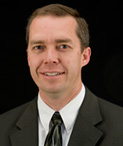
One day my young son came home from his third grade class and sat down to work on his homework. "Math—yuck," he said. "It's too hard. I can't do it right and I don't want to know this stuff."
Two things immediately crossed my mind. First, where did his parents go wrong (that's an article for a different industry), and second, he obviously did not see the value in what he was doing, nor was he receiving the appropriate feedback to motivate the desire to improve.
I quickly responded and asked him to get me three apples from the fruit basket. After holding them up, I asked him to put one back. "How many apples do I have now?" I asked. "Two," he said. "See you can do math," I replied. His perspective changed and so did his attitude as he began to recognize all the math around him.
For the next few years we focused on how simple math is used everywhere. I'll never forget the pride he showed when he calculated the amount of concrete we would need in order to pour a new driveway. Over time, meaningful feedback was given and its value perceived, while his desire and motivation to improve increased.
Where is this going? Simple feedback creates focused perspective and value for the recipient.
In manufacturing, we look at all kinds of data, such as solder defects, process control limits, failure rates, and product performance over temperature. This information provides feedback on the performance of specific processes. Depending on the trend of the data over time, we generate a perceived value for a process. According to the data, we may leave well enough alone, or we may allocate resources to improve its outcome.

A variety of manufacturing data is used as feedback for improving production processes.
In every process where performance is measured and properly reported, performance will improve and the perceived value of that feedback accelerates the improvement.
In Campbell Scientific's Manufacturing department there are well-trained and seasoned employees who take an incredible amount of pride in their work. In addition, with good feedback they can perform with increased perspective and value.
A few months ago, during one of our random out-of-box quality audits, one of our application engineers discovered a mechanical interference on the battery base of a datalogger. Though the error was not functionally debilitating, the feedback was taken and an analysis made. Inventory was inspected, uncovering more of the same issue. Root-cause analysis took the investigation through the assembly process to a welding fixture that needed some small adjustments and some go/no-go gauges that were slightly out of tolerance. The feedback was delivered and the fixtures and gauges were modified. Everyone involved in this event improved in their roles. Perspective and value were increased and product quality was restored. Without feedback, the situation would have remained the same or continued to deteriorate.
A great source of feedback for Campbell Scientific is our customers. As a customer, you have the ear of your application engineer. Your perspective is important to our direction. Is it a new product you are looking for? Maybe your expectations were not achieved after you received your purchase. You might have an idea on how to improve your experience. Your application engineer is your advocate, and will send your feedback where it will do the most good. Customer feedback is reported and reviewed in regular quality meetings where action is taken to address concerns.
Campbell Scientific has been successfully making measurement instruments for many years. As technologies evolve and the need to make new and unique measurements continues, your feedback to us will help assure that our products will continue to meet your measurement needs.

